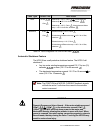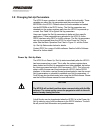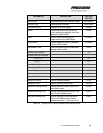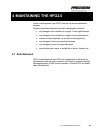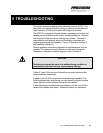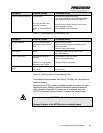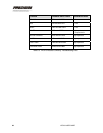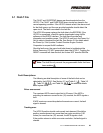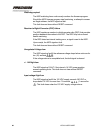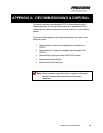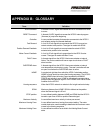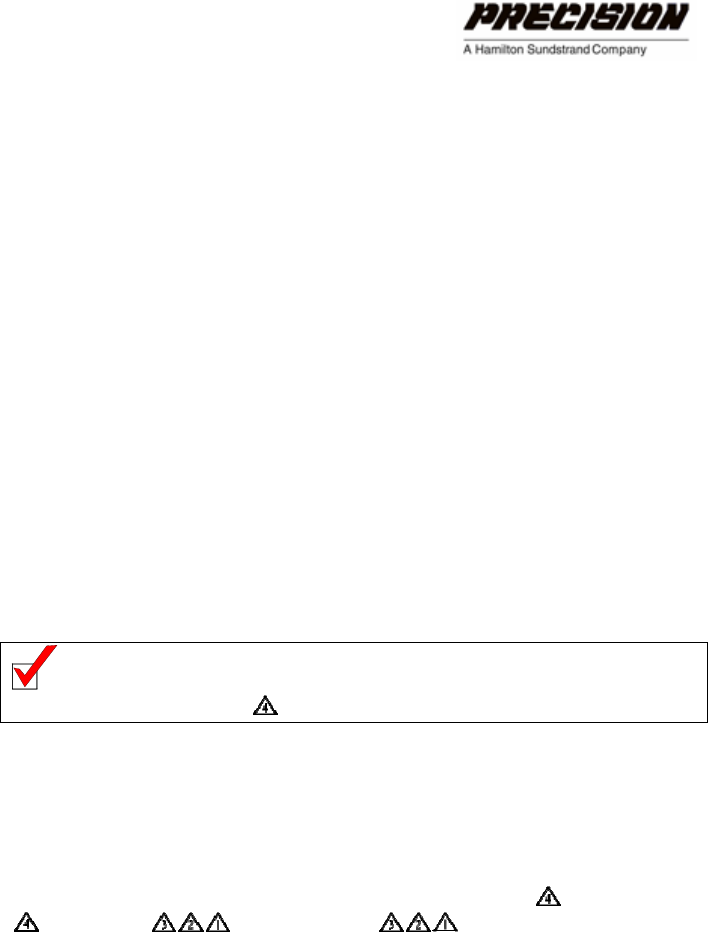
5.1 FAULT File
The FAULT and OVERTEMP alarms are discrete outputs from the
HFG2.0. The FAULT and OVERTEMP alarm circuits are closed in the
normal operating condition. If the HFG2.0 detects a fault, the alarm circuit
for that fault opens, and the user-provided controller should detect the
open circuit. The fault is recorded in the fault file.
The HFG2.0 firmware captures the fault data in the EEPROM. If the
HFG2.0 is operational, a fault file can be downloaded using ActWiz
software via the RS232 interface. The fault file will provide fault
information and possible causes. The HFG2.0 must be in the Power Up /
Set Up state to download the fault file. See Section 3.8 for details about
the Power Up / Set Up state. Contact Precision Engine Controls
Corporation to request ActWiz software.
Should a fault occur, the user should shut down to troubleshoot the
failure. Removing 120 VDC power shuts down the HFG2.0. Toggling the
RESET command will clear the fault, but it does NOT clear the fault file.
Note: The fault file only records the programmable faults that have
been enabled .
Fault Descriptions
The following are brief description of some of the faults that can be
detected by the HFG2.0. See Section 3.7 and Table 3-1
, Table 3-2
, Table 3-3 , and Table 3-4 for additional details
about system faults.
Driver over-current
The maximum MCE current output limit is 25 amps. If the MCE is
outputting its maximum current for ten (10) seconds, the MCE signals a
fault.
If MCE maximum current drop below the maximum current, the fault
signal is cleared.
Tracking error
The HFG2.0 position should continuously track demand. Should the
position versus demand vary more than one motor revolution (0.20
inches) for more than ten (10) seconds, the MCE signals a fault.
If the position returns to within one motor revolution, the fault signal is
cleared.
CH. 4: TROUBLESHOOTING THE HFG2.0 59



